A couple of you have asked me about my new fascination with TtV photography, so I thought I’d post a little tutorial here.
The idea is simple enough: take a photograph through the viewfinder of another camera. The viewfinder camera is usually a vintage twin-lens reflex camera, the kind that you would have held at waist-level and looked down into the viewfinder. It doesn’t need to be in working order, it just needs a largish and relatively clear viewfinder. A little bit of schmutz on the viewfinder does give your images character, though! I started with an old Kodak Brownie Hawkeye that I got from my uncle when I was wee, and I recently won an auction on eBay for a lot (pun intended) of vintage cameras including my new baby, a Kodak Duaflex IV. It’s in amazingly good condition for a 50+ year old camera!
This is a terrible, blurry shot of the top and back of the Duaflex, but at least it gives you an idea of how nice and big the viewfinder on top is. (Note to self, check the LCD display every now and then. You’re not shooting film anymore, you can fix your mistakes on the fly!)
The second camera, the one that actually takes the picture, can be a point-and-shoot, or a dSLR, or if you’re really old-skool, a film camera of any kind. The first tutorials I read said you need a macro lens, but I don’t use one. You align your subject in the viewfinder of the vintage camera, check your focus, and shoot. You’ll end up with a shot that looks kind of like this.
Then you crop it to square, leaving that characteristic bit of black frame, and do however much or little post-processing twists your knickers. I like a little bit of an urban-acid cross-processed look to mine.
Once you’ve taken a few TtV pictures, you realize that there is an annoying glare on the viewfinder, and that’s why people build amazing Rube-Goldberg-esque contraptions to eliminate the extraneous light. I’ve heard of TtV junkies using everything from a Pringles can to elaborately decorated and personalized contraptions. I’m using a highly sophisticated contraption myself, constructed from yellow posterboard and scotch tape:
And, equally stunning in its sophistication, here is my visual summation of the TtV process. Because sometimes a picture *is* worth a thousand words. Try not to be too awed by my mad photoshopping skillz.
And this is the final product.
It’s a lot more challenging than it looks to get your composition right, not least because everything is flipped right to left, so when you want to adjust your image to move the subject more to the right, you have to swing to the left. In fact, there’s ongoing debate in the TtV community as to whether you should flip your final images or leave them reversed. (So far, I lean toward the latter.) Getting your camera to focus on the image in the viewfinder and not the viewfinder glass is another troublesome spot. But IMHO, when it does work, TtV produces dreamy, retro images that are oddly compelling.
I’m totally hooked! In fact, I’ve discovered that there’s a group on Flickr of devotees who are doing 365 projects entirely in TtV. Hmmm, that may be next year’s challenge — if I didn’t think my family would completely disown me if I even thought about it!
If you’re curious and would like to see more, check out my TtV set on Flickr!
Edited to add: I finally got around to rebuilding my contraption and writing a better version of this tutorial in May of 2010. Check it out!

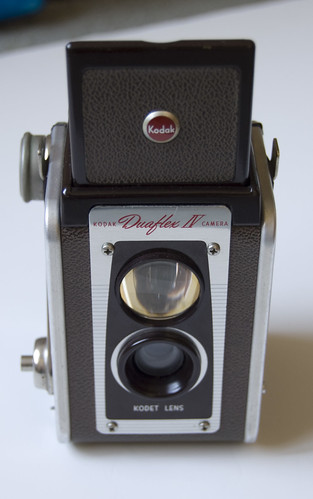

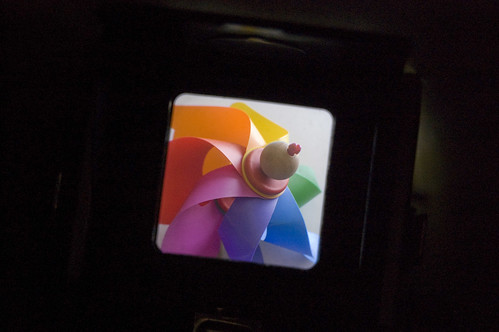
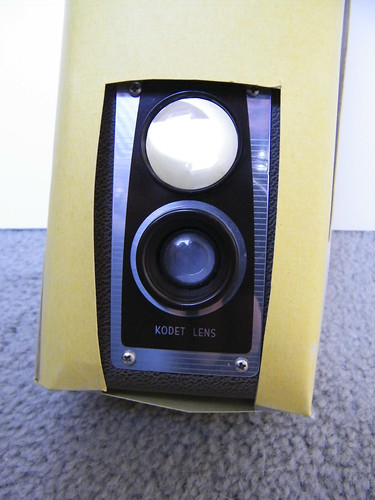
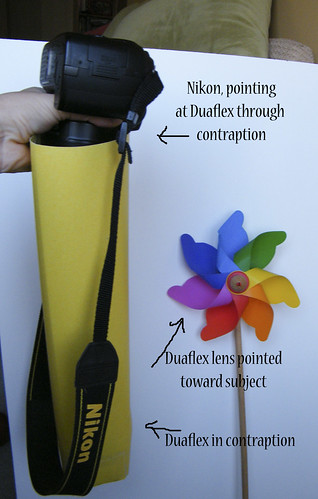
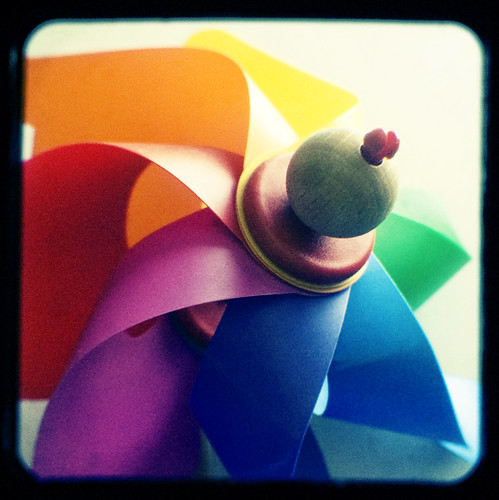
Oh goody!! I was hoping you’d post a tutorial of this at some point. I am intrigued to go out, find a vintage camera and try sometime soon!
Have you done any portraits this way, Dani? Any pictures of those cute boys? I’d be interested to see how that looks.
Related: I DO NOT NEED ANOTHER HOBBY. Or an off-shoot of a current hobby!
Oh come on, Amy, you know you want to!! 😉
I haven’t done a lot of portraits with the TtV, partly because it takes a lot of work to get the hang of composing and my subjects keep walking out of the frame but largely because the Duaflex gives everything a bit of a wide-angle, almost fish-eye perspective that’s not overly flattering in portraiture. But I’ll keep trying!
This TtV (Through the Viewfinder) Photography is whack: http://tiny.cc/dhlD2
I LOVE this photography technique, and your photo is fantastic! I just bought a Kodak Duaflex, and have all kinds of great plans for it. I like your contraption, too 🙂
Been using all kinds of camera and techniques and have never heard of TtV – wayyyyy cool and I can’t wait to try it !! Of course I have several of those old cameras among my 100+ camera collection ! Can’t wait to do it ! THANKS SO MUCH FOR THIS GREAT TUTORIAL !!!!!
Nice tutorial, although it seems like a waste of time. Just click the shutter on the Duaflex. If you like having a digital version of your photos, have the processing place scan your negatives to a disk.
Ah, but Adam, you’re missing the point — you’re not taking pictures *with* the Duaflex, but through the Duaflex’s viewfinder. The images aren’t even coming through the same lens, and if I were to put a roll of film through it, the images would look a heck of a lot different than the ones I take through the viewfinder — no image reversal, no distortion, none of that unique TtV funkiness.
But thanks for your comment anyway! 🙂
Aaaaad, quick as all that, here I am. Only I don’t have time to read it now. I’ll be back later tonight.
RT @danigirl: What the heck is TtV photography anyway, and why would you bother? http://bit.ly/eX4sx3 << thanks for this link on my flickr!